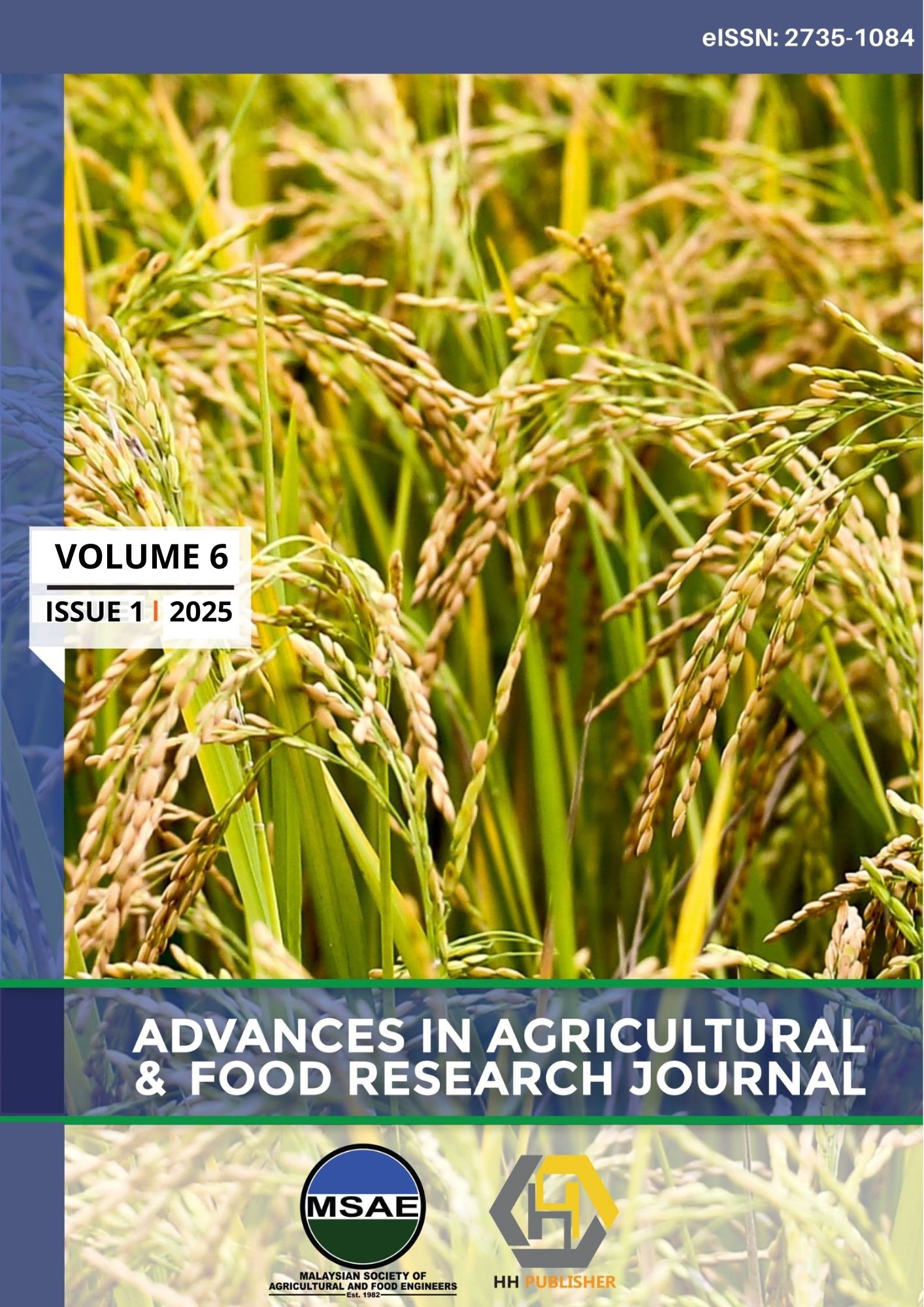Proximate Composition, Fatty Acid Profile and Total Amino Acid Content in Raw Samples of Asian Swamp Eel (Monopterus albus)
DOI:
https://doi.org/10.36877/aafrj.a0000381Abstract
Due to the advancement of refining and processing technologies, as well as an increased study on the fish proteins and peptides, a new industry has emerged to produce a fish protein powder for human consumption and medicinal products. In this regard, Asian swamp eel has become a commercially important fish in Eastern and Southeastern Asia due to its high nutritional value and its potential as a new ingredient for marketing protein powder. This study aims to determine the proximate composition and analyse amino acid and fatty acid in two parts of the eel, which are the body and waste (head and tail). The eel was locally bred eel from a farm located in Terengganu. The results showed that swamp eel contained 9.0g/100g ash, 12.2g/100g moisture, 2.3g/100g fat, and 76.5g/100g protein. The total content of fatty acid in the eel’s body was found to be 0.11g/100g sample, whereby this is lower than the content in the waste, which is 0.17g/100g sample. The dominant fatty acids in both eel’s body and waste are palmitic, lauric, oleic and a-Linoleic. The waste has shown further high fatty for myristic and stearic acids. Meanwhile, the highest amino acid contents in both parts, body and waste, is the glutamic acid (Glu) which is 2.44g/100g for body sample and 1.71g/100g for waste sample. Other dominant amino acids are aspartic acid, glycine, arginine, threonine and leucine. This study provides knowledge on the health values of consuming Asian swamp eel and its potential to produce value-added products from eel farming including the processing of their byproducts for the production of novel food ingredients, nutraceuticals, pharmaceuticals, and other.
Downloads
Published
How to Cite
Issue
Section
License
Copyright (c) 2025 Nor Amaiza Mohd Amin, Roseliza Kadir Basha, Noor Zafira Noor Hasnan, Hamizah Mohammad Rosdi, Rizal Syah Hussin

This work is licensed under a Creative Commons Attribution-NonCommercial 4.0 International License.
Author(s) shall retain the copyright of their work and grant the Journal/Publisher right for the first publication with the work simultaneously licensed under:
Creative Commons Attribution-NonCommercial 4.0 International (CC BY-NC 4.0). This license allows for the copying, distribution and transmission of the work, provided the correct attribution of the original creator is stated. Adaptation and remixing are also permitted.

This broad license intends to facilitate free access to, as well as the unrestricted reuse of, original works of all types for non-commercial purposes.
The author(s) permits HH Publisher to publish this article that has not been submitted elsewhere.

.png)

.jpg)



